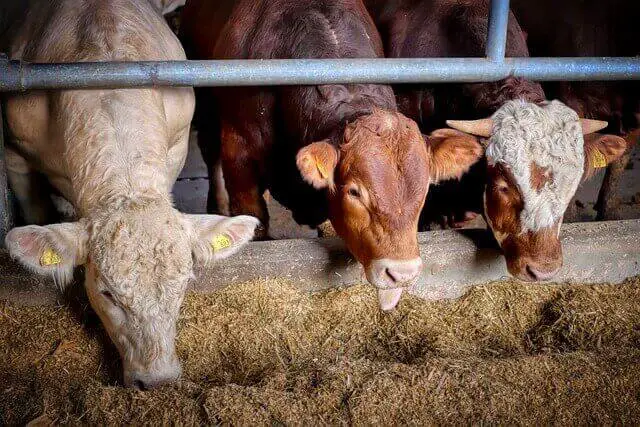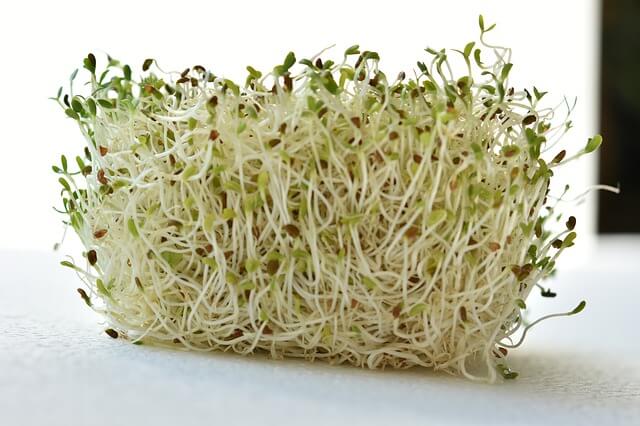52 Fun Facts About Alfalfa (with Photos, ID & Info)
The alfalfa plant is a legume that grows in many climates. It’s often used as animal feed, hay for horses and cattle, green manure to help break down the soil before planting other crops, or sometimes just for decoration.
There are so many interesting facts about this humble plant that it would be hard to cover them all in one article. In this article we will explore 52 fun facts about alfalfa, including photos and identification tips.
Overview
- Kingdom: Plantae
- Clade: Tracheophytes
- Clade: Angiosperms
- Clade: Eudicots
- Clade: Rosids
- Order: Fabales
- Family: Fabaceae
- Subfamily: Faboideae
- Tribe: Trifolieae
- Genus: Medicago
- Section: M. sect. Medicago
- Species: M. sativa
- Binomial Name:Medicago sativa (Carl Linnaeus)
- Scientific Name: Medicago sativa
- Common names: Lucerne, Alfalfa
- Native Area: Southwest Asia, and Iran.
- Plant Type: Perennial flowering plant.
- Flower Type/Color: Small clusters of purple flowers.
- Propagation: Seed, stem cuttings.
- Plant Height: 12-36″ inches (1-3feet).
- Plant Spacing: 24-36″ inches. (2-3 feet).
- Hardiness Zones: 3 to 6.
- Bloom Time: May-July
- Harvest Period: est. 60-70 days (after sowing).
- Sun Exposure: 6-8 hours of Full Sun
- Soil Type: Use a well-draining sandy loam, silt loam, or clay loam.
- Soil pH: 6.8-7.5
Plant Description
Alfalfa is the only plant species in the genus Medicago, which belongs to the family Fabaceae.
Alfalfa is a legume that contributes to soil health by fixing nitrogen from the atmosphere and adding it to the soil. It is a perennial plant that begins life as a deep taproot and establishes a long, lateral root system over time. Once established, alfalfa can send down roots up to 20 feet from the crown of the plant.
The leaves of alfalfa are very sharp with serrated edges at their bases, which fold upward as sun exposure increases in order to make more photosynthesis possible. The leaves have a base that is quite pointed, which helps them to help to trap water. The leaflets are narrow and stiff, with sharp edges, and are typically arranged alternately on the stem.
The seeds of alfalfa are small but, they are flat to round, so they tend to stay on the ground for longer periods of time without being blown away by wind or trampled. The Alfalfa plant needs full sunlight, which helps it obtain enough energy to take in much-needed nutrients like nitrogen (N) that it needs for seed production.

Planting
When to Sow: Spring / Summer
Germination: For best results germinate indoors in a small tray. Once the sprouts have grown about 4-5″ inches, they can be transplanted into your garden.
Sunlight: Plant it in an area that receives at least 6 hours of full sunlight daily.
Water: Keep the soil moist, but not soaked, avoid over-watering to avoid fungal diseases, and root rot.
Fun Facts About Alfalfa
- Alfalfa originated in Southwest Asia, including Iran, where it was cultivated as early as 79 AD. It became an important crop throughout the world because it can be grown in most climates and does not require much water.
- It is grown primarily for the leaves, which are used as livestock feed. It’s grown in most parts of the world today, with notable production occurring in Western Europe (France), Eastern Europe (Ukraine), and North America (United States).
- The alfalfa seed (Medicago sativa) is the fruit of a flowering plant grown for its nutrient-rich leaves. It can be eaten raw or cooked; it’s also an ingredient in many dishes around the world such as pizza toppings or salad dressings.
- The leaves of this plant are rich in protein and minerals including calcium, manganese, phosphorus, iron, vitamins A and C, beta-carotene, and lysine. The green powder that is produced from the alfalfa’s seeds combined with water is also rich in protein.
- Alfalfa also produces a saponin compound that breaks down the cholesterol deposits in arteries to produce blood flow in areas where there had been clogged vessels. Some herbalists also use alfalfa to treat conditions of the stomach, liver, and kidneys.
- Did you know that alfalfa did not arrive in the United States until 1850? That’s right, before then it was just another weed. It is believed that Spanish missionaries brought Alfalfa to California for livestock feed, and later it was grown on a small scale for hay in the Midwest, primarily Utah.
- Alfalfa is a legume plant of the pea family, which means it has the ability to form a symbiotic relationship with a bacterium called rhizobia in its root nodules. This helps make nitrogen from the air available for other plants that don’t have this ability, and also fixes atmospheric nitrogen into nitrates that can be used by both alfalfa and other plants.
- Alfalfa’s name comes from Arabic words meaning “best forage”.
- Alfalfa’s record for biomass production is rivaled only by alfalfa hay, which can yield up to 2 tons of dry matter per hectare per year, or about 10 tons per acre.
- The Alfalfa is also called “lucerne”, alfalfa hay is sold as hay for horses, the alfalfa seed is used to produce bean sprouts, and leaves are processed into green manure or dried for hay.
- Alfalfa is grown all over the world for its uses as food for livestock, green manure, and green fertilizer.
- The Alfalfa plant can grow up to three feet tall, and up to three feet wide with small clusters of purple flowers.
- When the leaves of this plant are wounded, they produce a chemical that attracts wasps that help give pollination to the plant.
- The plant is grown commercially in areas with mild winters, like California, northwest Washington, Oregon, and the prairie provinces of Canada.
- Alfalfa can be grown successfully in most parts of the world that have no winter seasons or cooler temperatures.
- This plant is commonly found growing in the Western United States, where it covers over 400,000 hectares (1 million acres).

- There are many varieties of this plant that were developed by Russian scientists in 1979 through conventional breeding.
- Alfalfa takes about 60-70 days to reach full maturity; it can be planted year round but thrives most during summer months.
- Alfalfa is a perennial, which means it lives for more than three or more growing seasons. This plant normally lives 4-8 years on average, but they have been known to survive for over 20 years depending on the climate and variety.
- Alfalfa has been consumed by humans for over 2,000 years and was an important crop in ancient Rome and Greece.
- In the United States, forage from alfalfa is the most popular type of livestock feed.
- The number one use of alfalfa in North America is to feed dairy cows because it helps reduce the effects of their lactose intolerance and gives them fewer intestinal disorders.
- Alfalfa hay is the third most valuable field crop in the USA, behind only soybean and corn.
- Alfalfa is the fourth most widely grown crop throughout the United States.
- Alfalfa is found in over 6,000 different products, including meat, dairy, meat substitute, vegetable oil and broths.
- Alfalfa is popular because it has a lower phosphorus content than other legume forages.
- The chemical compound that gives alfalfa its distinct aroma and flavor is called “thioacetamide” which is also found in black pepper.
- Alfalfa tops the list of North America’s #1 hay crop for cow-calf operations.
- The same industry reports that alfalfa is the #1 forage crop for horses.
- Alfalfa is the most nutritious grass or hay which can be fed to livestock.
- Alfalfa seeds are very small compared to many other legumes, which makes them easy to harvest.
- Alfalfa is the only legume that can be grazed by cattle and horses.
- Alfalfa helps improve soil fertility by adding nitrogen, potassium, calcium, magnesium, phosphorus content as well as organic matter for better fertility.








